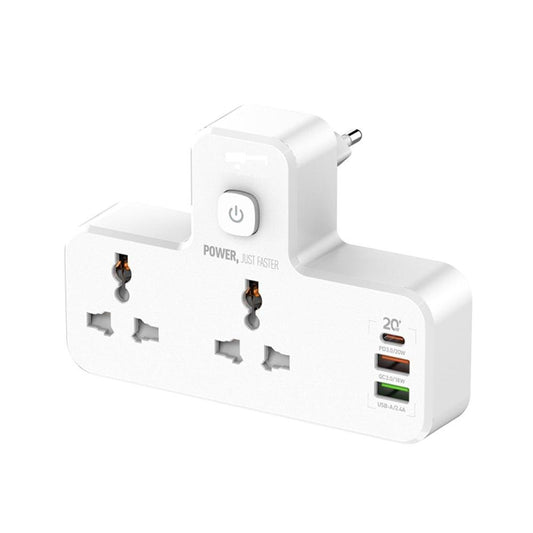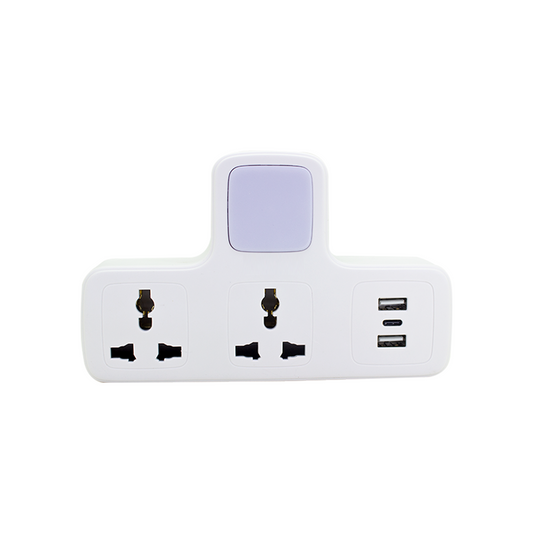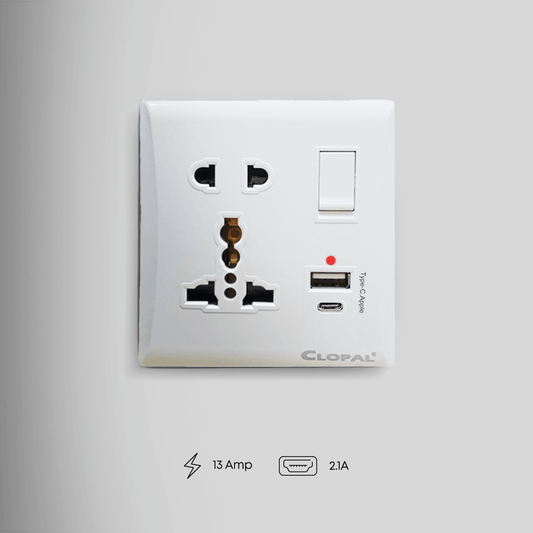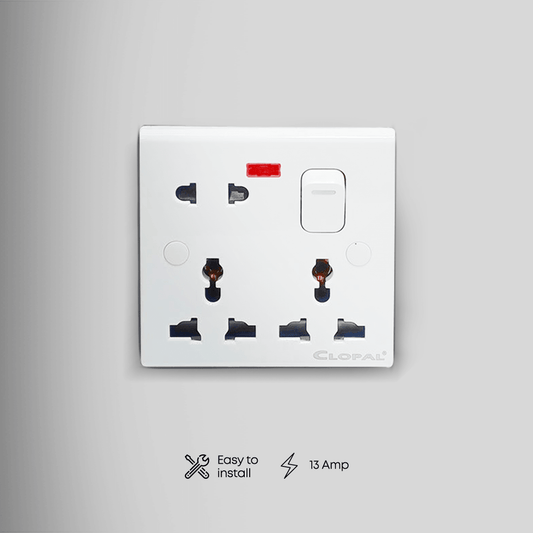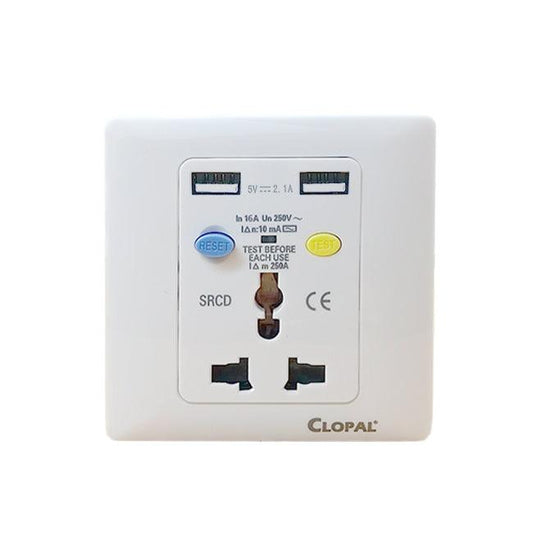
Circuit Breaker Explained | Components and How They Work
Have you ever plugged in a heavy iron, and suddenly, bam, half your house goes dark? You search for your flashlights and locate the electrical panel, usually hidden behind a door or in the basement. You find the one switch that looks different, you flip it, and ta-da, your lights are back! After that, you’re wiser about not using the iron with everything else plugged in. But why does this happen? Well, it’s because the circuit breaker tripped!
Today, we will tell you the whole story of circuit breakers, what they are, how they work, and why you should install circuit breakers at your home or office to avoid any future mishap. So, let’s begin!
What Is A Circuit Breaker And Its Component
Circuit breakers are like the guardians of an electrical system, ensuring that it operates safely and efficiently. They act as a safety net, preventing electrical disasters that could otherwise occur due to excessive current flow.
In simple terms, a circuit breaker is like an automatic switch. It turns off the electricity when it goes over a certain level, which keeps the electrical system safe.
Components of a Circuit Breaker
Circuit breakers have several key components that help them to work. Before understanding how circuit breakers work, let’s break down these components and what are their functions:
Actuator:
An actuator is responsible for physically operating the mechanism that opens or closes the contacts within the circuit breaker. It is also called a trip unit. It can be a manual or automatic mechanism used to control the state of the circuit breaker. In residential and commercial settings, this is often a switch or a lever that you can toggle to turn the circuit breaker on or off.
Contacts:
Contacts are the heart of a circuit breaker. When the circuit is closed (the breaker is on), these contacts are in direct contact with each other, allowing current to flow. When a fault occurs, the contacts separate, interrupting the current flow.
Trip Unit:
The trip unit is a critical component that senses abnormal conditions in the circuit. It can detect overcurrent, short circuits, and other faults. Once it detects an issue, the trip unit sends a signal to the actuator to open the contacts, disconnecting the circuit.
Arc Chute:
When the contacts open, an electrical arc can form due to the interruption of the current flow. The arc chute is designed to quench this arc quickly, preventing it from damaging the contacts or causing a fire.
Operating Mechanism:
The operating mechanism opens and closes the contacts. It translates the movement of the actuator into the separation or closure of the contacts. Depending on the type of circuit breaker, this mechanism can be manual or automatic.
Enclosure:
The enclosure houses all the internal components of the circuit breaker and provides insulation and protection. In industrial and heavy-duty applications, the enclosure might also have cooling and ventilation systems to dissipate heat generated during circuit interruption.
Trip Indicator:
Some circuit breakers are equipped with trip indicators that provide visual or remote signals when the breaker has tripped, indicating a fault in the circuit.
How Circuit Breakers Work
Circuit breakers are really important in today’s world. They help keep your home and many other places safe from electrical problems. Let’s see the process of how circuit breakers work:
Normal Operation:
In normal operation, the circuit breaker’s contacts are closed. They allow electric current to flow through the circuit without interruption. The actuator is in the ‘on’ position, and the trip unit remains inactive.
Overcurrent or Fault Detection:
When an overcurrent or fault occurs in the circuit, the trip unit detects the abnormal condition. The magnitude and duration of the overcurrent or fault play a crucial role in determining whether the circuit breaker trips.
Signal to the Actuator:
Once the trip unit senses a fault, it sends a signal to the actuator. In manual circuit breakers, this signal is generated when you manually toggle the switch or lever to the ‘off’ position. In automatic circuit breakers, the trip unit directly activates the actuator.
Opening of Contacts:
The actuator, in response to the signal, causes the contacts to open rapidly. This action interrupts the flow of current in the circuit.
Arc Quenching:
As the contacts separate, an electrical arc can form due to the current interruption. To prevent this arc from causing damage, the arc chute quickly extinguishes it. The arc chute’s design is crucial for ensuring a safe interruption.
Circuit Isolation:
With the contacts open, the circuit is effectively isolated from the power source. This ensures that no further current flows through the faulty circuit.
Resetting the Circuit Breaker:
After the fault is rectified, the circuit breaker can be reset. In manual circuit breakers, this is done by toggling the actuator back to the ‘on’ position. In automatic circuit breakers, the reset can be controlled remotely or through a command from a control system.
Restoration of Normal Operation:
Once reset, the contacts close, and the circuit is restored to normal operation, allowing current to flow once again.
Types of Circuit Breakers
There are different types available, like single-pole, two-pole, three-pole, and four-pole. If you’re in Pakistan and need to know the prices, you should consider the brand, how much electricity they can handle (amperage), and any extra features they might have. Circuit Breaker Price in Pakistan can vary a lot, so it’s smart to compare what different suppliers offer to get the best deal for your electrical needs. Some of the common types include:
Miniature Circuit Breakers (MCBs):
MCBs are typically used in residential and commercial electrical panels. They are compact, affordable, and protect against overloads and short circuits. MCBs are often installed for individual circuits within a building.
Molded Case Circuit Breakers (MCCBs):
MCCBs are larger and more robust than MCBs. They are commonly found in industrial and commercial settings, providing protection for higher current levels and offering a range of adjustable settings.
Ground Fault Circuit Interrupters (GFCIs):
Ground Fault Circuit Interrupters or Electrical leakage circuit breakers are designed to spot any electrical leakage or ground faults and stop them quickly. Imagine you’re in the bathroom or kitchen, places where things can get wet. If there’s a problem with the electricity, like a “leak,” these circuit breakers act fast to stop it. They do this because wet areas and electricity don’t mix well, and accidents can happen.
Arc Fault Circuit Interrupters (AFCIs):
AFCIs are designed to detect and interrupt circuits in the presence of dangerous arcing conditions, which can lead to electrical fires. They are often required in bedrooms and living areas of residential buildings.
Residual Current Circuit Breakers (RCCBs):
RCCBs are used to protect against ground faults and are commonly found in locations where electrical equipment is exposed to damp or wet conditions, such as swimming pools and industrial facilities.
Oil Circuit Breakers:
Oil circuit breakers are typically used in high-voltage applications. They use oil as an insulating and arc-quenching medium. When the contacts open, the oil extinguishes the electrical arc.
Vacuum Circuit Breakers:
Vacuum circuit breakers are often used in medium-voltage applications. They rely on a vacuum as the arc-quenching medium, which is highly effective at extinguishing arcs.
Final words:
The circuit breaker is silent protectors. It jumps into action when things go wrong, like when there’s too much electricity or something’s broken. It stops bad things from happening. These circuit breakers come in all shapes and sizes for different jobs. Some are for homes, and others are for big buildings and factories.

